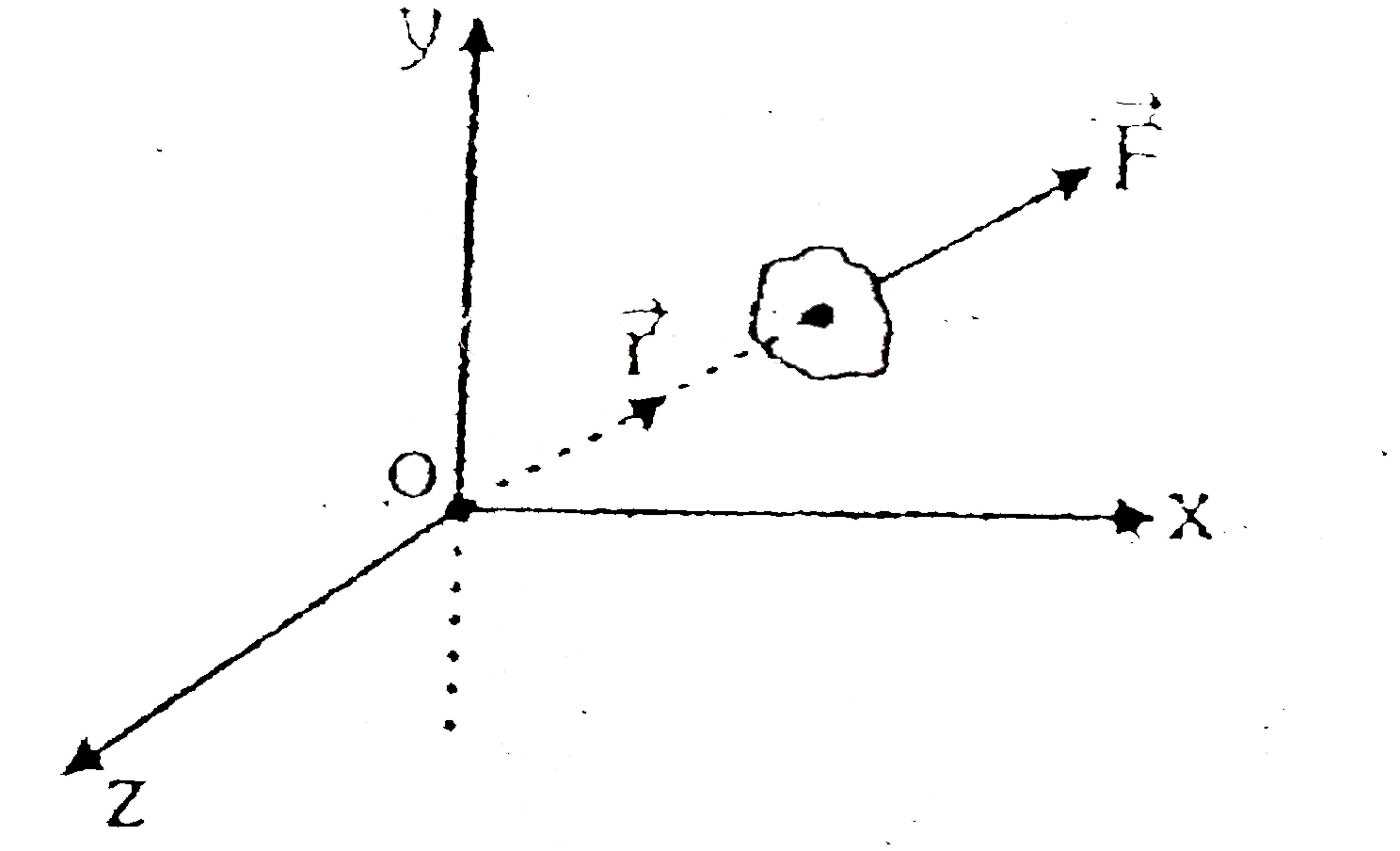A body is free to rotate about an axis parallel to y−axis. A force of →F=(3ˆi+2ˆj+6ˆk)N is acting on the body the position vector of whose point of applications is →r=(2ˆi−3ˆj)m. The moment of inertia of body about y−axis is 10kgm2. The angular acceleration of body is :−
 Solution in Gujrati
Solution in Gujrati
(−1.8Hat(i)−1.2ˆj+1.3ˆk)rad/s2
−1.8ˆirad/s2
−1.2ˆjrad/s2
−1.3ˆkrad/s2
The correct Answer is:C
Torque about origin experienced by body is →τ=→τ×→F=(2ˆi−3ˆj)×(3ˆi+2ˆj+6ˆk)N−m=−18ˆi−12ˆj+13ˆk
Bu as the body is allowed to rotate only along y-axis, the y-coordinates of torque only causes the angular acceleration of the body. So, α=τyl=−1210ˆj=−1.2ˆjrad/s2
Topper's Solved these Questions
- TEST PAPERBOOK - ALLEN CHAPTER - TEST PAPEREXERCISE - PHYSICS
4 Videos
- TEST PAPERBOOK - ALLEN CHAPTER - TEST PAPEREXERCISE - PHYSICS
4 Videos
- SIMPLE HARMONIC MOTIONBOOK - ALLEN CHAPTER - SIMPLE HARMONIC MOTIONEXERCISE - Example
1 Videos
- TEST PAPER 1BOOK - ALLEN CHAPTER - TEST PAPER 1EXERCISE - PHYSICS
11 Videos
Similar Questions
Choose the correct statement:
View SolutionChoose the correct statement:
View SolutionA rod with rectangular cross section oscillates about a horizontal axis passing through one of its ends and it behaves like a seconds pendulum, its length will be
View SolutionWhy are electric field lines perpendicular at a point on an equipotential surface of a conductor ?
View SolutionVectors vec A=hat i+hat j-2hat k and vec B=3hat i+3hat j-6hat k are
View SolutionThe length of the perpendicular from the point with position vector hat i+2hat j+3hat k the line vec r=(3hat i+4hat j-3hat k)lambda(2hat i-3hat j+6hat k) is
View SolutionFor what value of m the vector vec A=2hat i+3hat j-6hat k is perpendicular to vec B=3hat i-mhat j+6hat k
View SolutionFind the dot product of two vectors →A=3ˆi+2ˆj−4ˆk and →B=2ˆi−3ˆj−6ˆk.
View SolutionFind the torque of the force vec(F)=(2hat(i)-3hat(j)+4hat(k)) N acting at the point vec(r )=(3hat(i)=2hat(j)+3hat(k)) m about the origion.
View Solutiona. Calculate →r=→a−→b+→c, where →a=5ˆi+4ˆj−6ˆk,
→b=−2ˆi+2ˆj+3ˆk, and →c=4ˆi+3ˆj+2ˆk.
b. Calculate the angle between →r and the z-axis.
View SolutionVector →A=ˆi+ˆj−2ˆk and →B=3ˆi+3ˆj−6ˆk are :
View SolutionFor vector →a=3ˆi+3ˆj−2ˆk , what are its component along X-axis, Y-axis & Z-axis.
View SolutionForces 2ˆi+7ˆj,2ˆi−5ˆj+6ˆk,−ˆi+2ˆj−ˆk act at a point P whose position vector is →4−3ˆj−2ˆk. Find the vector moment of the resultant of these forces acting at P about this Point Q whose position vector is 6ˆi+ˆj−3ˆk
View SolutionFind the distance between the parallel lines →r=ˆi+2ˆj−4ˆk+m(2ˆi+3ˆj+6ˆk) and →r=3ˆi+3ˆj−5ˆk+n(2ˆi+3ˆj+6ˆk)
View SolutionA force vec(F)=(2hat(i)+3hat(j)-5hat(k))N acts at a point vec(r )_(1)=(2hat(i)+4hat(j)+7hat(k))m . The torque of the force about the point vec(r )_(2)=(hat(i)+2hat(j)+3hat(k))m is
View SolutionLet →F=2ˆi+4ˆj+3ˆk at the point P with position vector ˆi−ˆj+3ˆk. Find the moment of →F about the line through the origin O in the direction of the vector →a=ˆi+2ˆj+2ˆk.
View Solution
